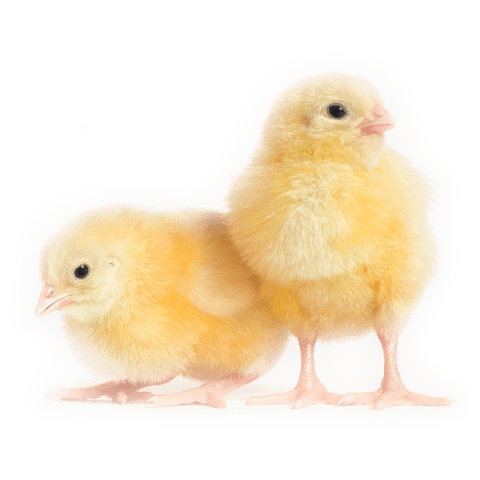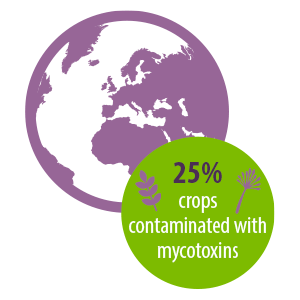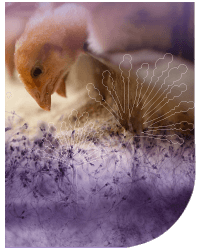Milad Manafi
Department of Animal Science, Faculty of Agricultural Sciences, Malayer University, Malayer, Iran.
[email protected]
Chicken meat is healthy and can be produced anywhere. It is among the relatively cheapest animal-source proteins and is not subject to any type of religious restrictions (Manafi et al., 2019).
Food safety and security measures have to be taken up within the food chain from livestock feed to human food.
⇰ Producing adequate and available amount of safe feed are important factors to be considered, otherwise, it may lead to food insecurity and malnutrition (Manafi et al., 2018a).

Contamination with mycotoxins is among the hidden-potential hazards having a variety of severe adverse health impacts (Manafi y Khosravinia, 2013).
To be more precise, mycotoxins are the secondary metabolites of different fungi (molds) species found on carbohydrate-rich feeds such as peanuts, cottonseed, corn, sorghum, and cereal grains (Manafi et al., 2014a).
 There is a range of fungi that can produce different mycotoxins when put together in favorable situations of hot conditions without adequate drying and aeration (Manafi et al., 2012a). There is a range of fungi that can produce different mycotoxins when put together in favorable situations of hot conditions without adequate drying and aeration (Manafi et al., 2012a). |
As FAO declared, nearly 25% of the world’s food crops and cereals produced annually are contaminated with mycotoxins, although this figure greatly underestimates the occurrence above the detectable levels (up to 60–80%) (Eskola et al., 2020).

This is to emphasize the importance of the world’s cereal production and distribution from two different angles:
- The yield of production
- The quality of the product
Aflatoxin contamination of feedstuffs has been reported to be of a wide range from 1 to 900μg/kg in commonly used ingredients as well as mixed feed samples in developing countries (Mohanamba et al., 2007).
Different countries have set down their permissible standard levels for importing and or providing the raw materials to feed their farm animals.
⇰ This is crucial to know, as mycotoxin contamination starts right from the production phase and is continued during harvest, transportation, and storage, before reaching the final customer in every corner of the globe.
Developing countries have very strict rules when it comes to this matter, but in certain countries, especially in Africa, a shortage of raw material supply is affecting the permissible level (EUR-Lex., 2021).
 As an expert, one should be aware of the variety and content levels of mycotoxins in the feedlot which they receive. Once known, farm nutritionists may think about how to minimize those adverse effects. As an expert, one should be aware of the variety and content levels of mycotoxins in the feedlot which they receive. Once known, farm nutritionists may think about how to minimize those adverse effects. |








 Micotoxicosis prevention
Micotoxicosis prevention